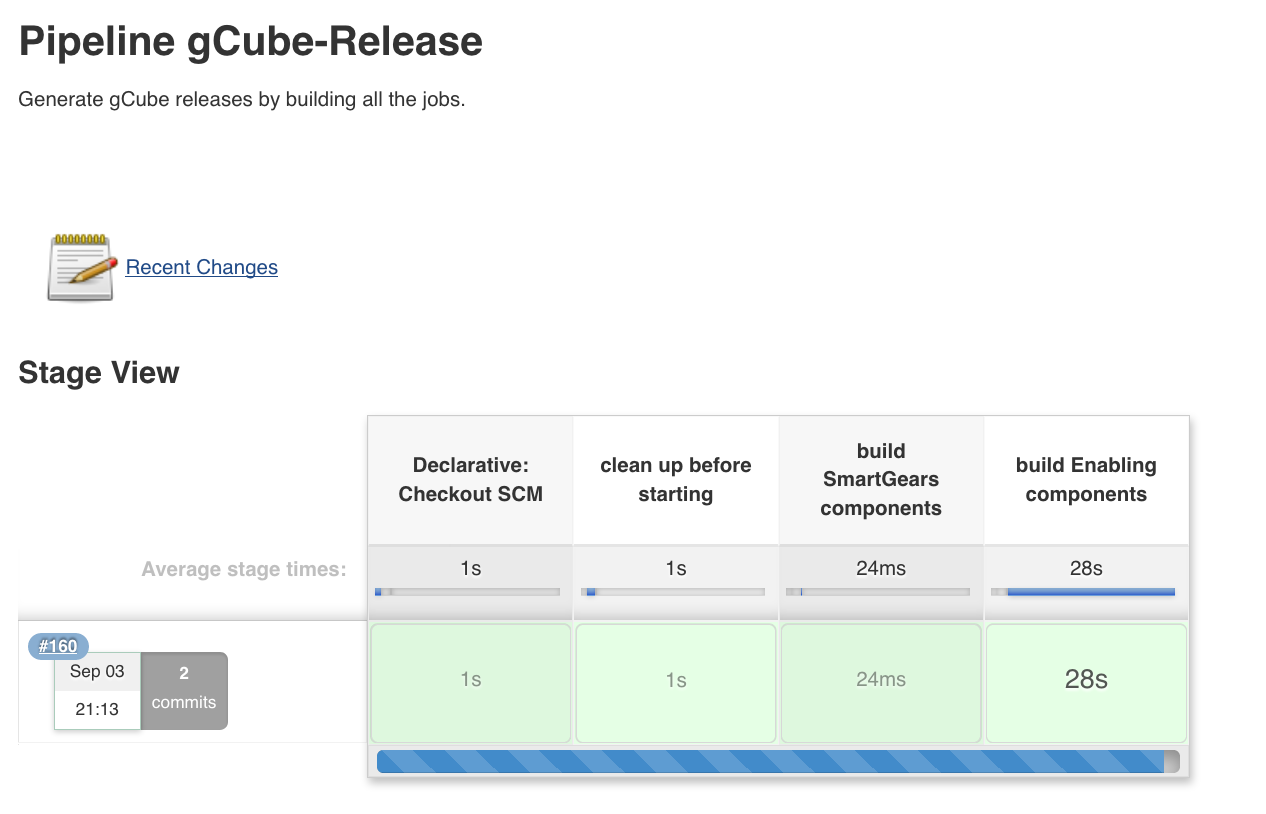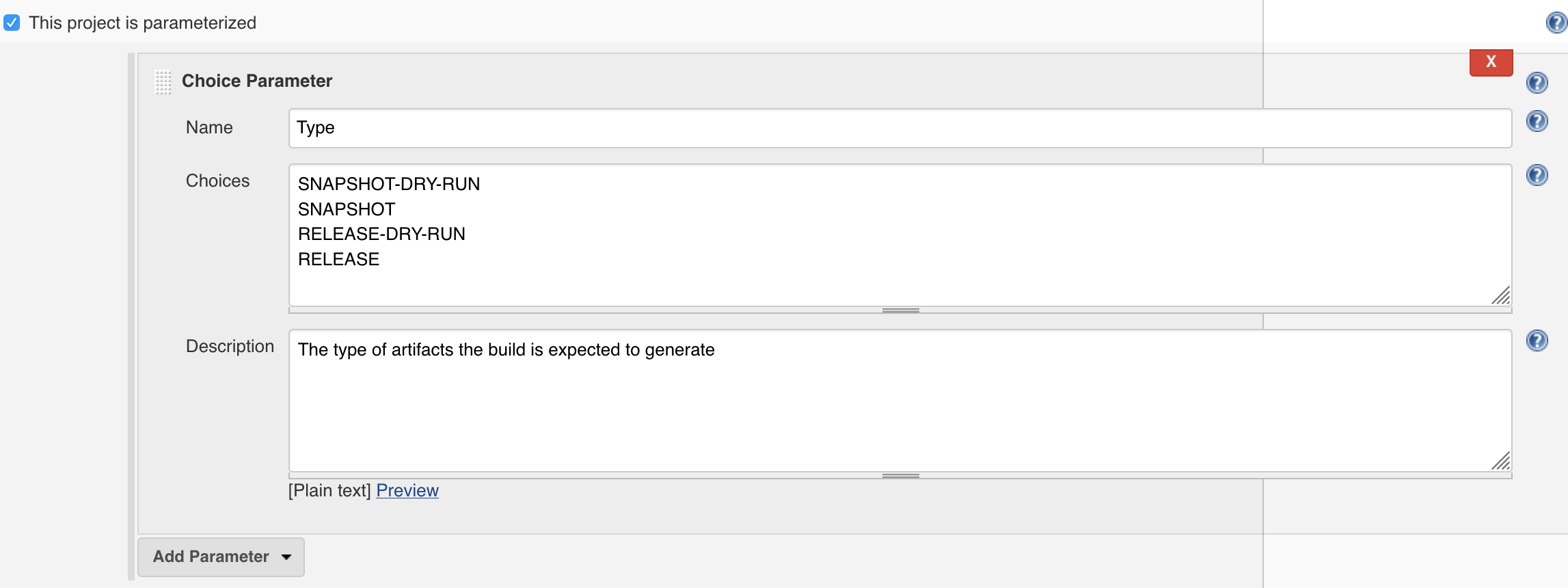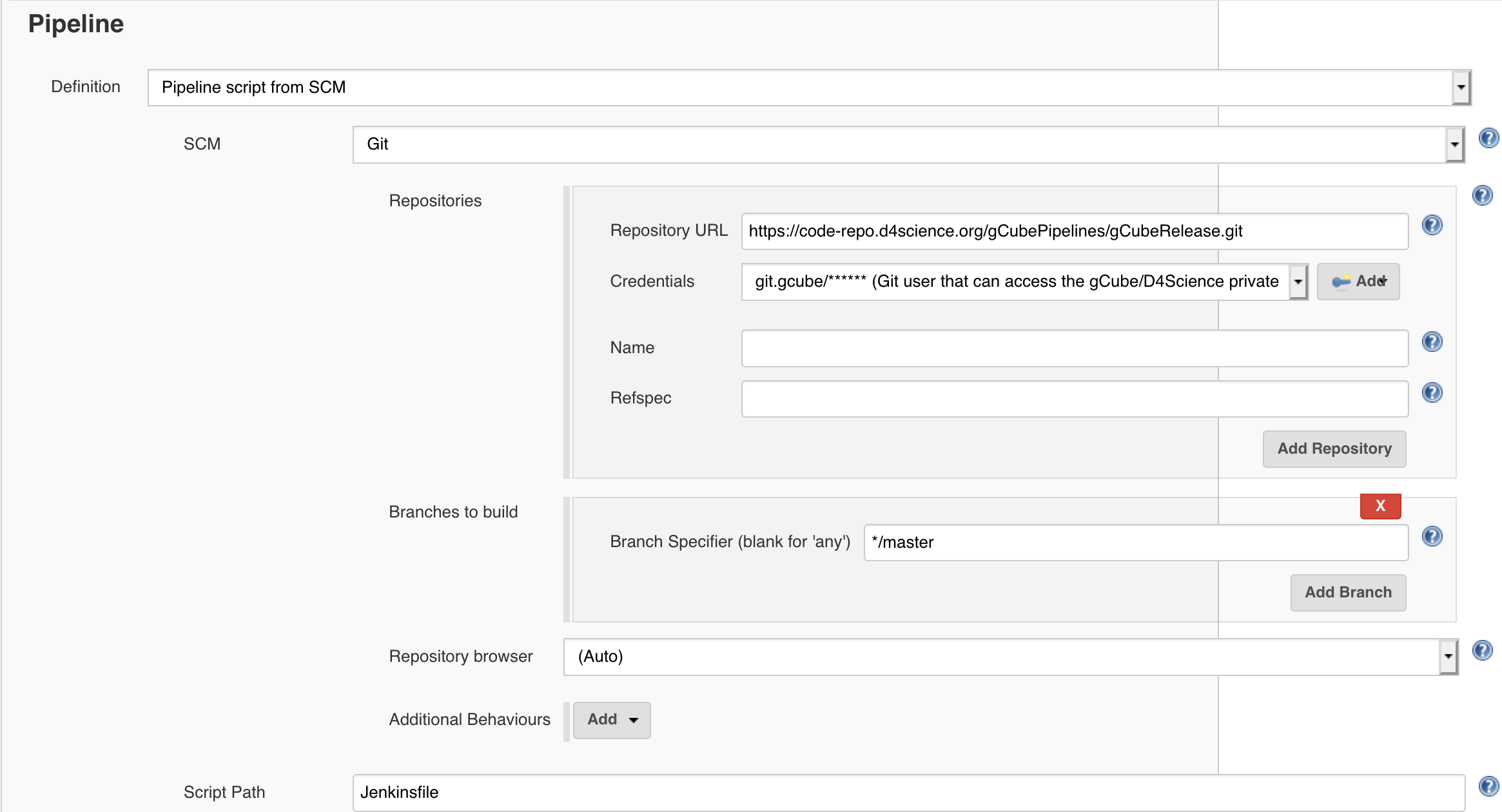Continuous Integration: Releases Jenkins Pipeline
Jenkins Pipeline is a combination of plugins that support the integration and implementation of continuous delivery pipelines using Jenkins. A pipeline has an extensible automation server for creating simple or complex delivery pipelines "as code," via pipeline DSL (Domain-specific Language).
Contents
Continuous Delivery and Jenkins
Jenkins has proven to be an expert in implementing continuous integration, continuous testing and continuous deployment to produce good quality software. When it comes to continuous delivery, Jenkins uses a feature called Jenkins pipeline. In order to understand why Jenkins pipeline was introduced, we have to understand what continuous delivery is and why it is important.
In simple words, continuous delivery is the capability to release a software at all times. It is a practice which ensures that the software is always in a production-ready state.
Jenkins Pipelines
What is a Jenkins pipeline?
A pipeline is a collection of jobs that brings the software from version control into the hands of the end users by using automation tools. It is a feature used to incorporate continuous delivery in our software development workflow.
Over the years, there have been multiple Jenkins pipeline releases including, Jenkins Build flow, Jenkins Build Pipeline plugin, Jenkins Workflow, etc. What are the key features of these plugins?
- They represent multiple Jenkins jobs as one whole workflow in the form of a pipeline.
- What do these pipelines do? These pipelines are a collection of Jenkins jobs which trigger each other in a specified sequence.
The maintenance cost for such a complex pipeline is huge and increases with the number of processes. It also becomes tedious to build and manage such a vast number of jobs. To overcome this issue, a new feature called Jenkins Pipeline Project was introduced.
The key feature of this pipeline is to define the entire deployment flow through code. What does this mean? It means that all the standard jobs defined by Jenkins are manually written as one whole script and they can be stored in a version control system. It basically follows the pipeline as code discipline. Instead of building several jobs for each phase, you can now code the entire workflow and put it in a Jenkinsfile. Below is a list of reasons why you should use the Jenkins Pipeline.
Jenkins Pipeline Advantages
- It models simple to complex pipelines as code by using Groovy DSL (Domain Specific Language)
- The code is stored in a text file called the Jenkinsfile which can be checked into a SCM (Source Code Management)
- Improves user interface by incorporating user input within the pipeline
- It is durable in terms of unplanned restart of the Jenkins master
- It can restart from saved checkpoints
- It supports complex pipelines by incorporating conditional loops, fork or join operations and allowing tasks to be performed in parallel
- It can integrate with several other plugins
What is a Jenkinsfile?
A Jenkinsfile is a text file that stores the entire workflow as code and it can be checked into a SCM on your local system. How is this advantageous? This enables the developers to access, edit and check the code at all times.
The Jenkinsfile is written using the Groovy DSL and it can be created through a text/groovy editor or through the configuration page on the Jenkins instance. It is written based on two syntaxes, namely:
- Declarative pipeline syntax
- Scripted pipeline syntax
Declarative pipeline is a relatively new feature that supports the pipeline as code concept. It makes the pipeline code easier to read and write. This code is written in a Jenkinsfile which can be checked into a source control management system such as Git. gCube uses declarative pipelines to control the Continuous Delivery process.
gCubeRelease Pipeline Project
In gCube we use a Pipeline to trigger the builds of jobs forming a gCube Release. The pipeline project is available at: https://jenkins.d4science.org/job/gCube-Release/
Parameters
Triggers
No triggers are defined because the pipeline is expected to be manually launched by the Release Manager:
It can be changed according to the release needs and the availability of a sufficient number of dedicate agents in Jenkins.
Git
The pipeline definition is maintained in a Git repository. This section connects the project to the Git repository.
Jenkins Pipeline Definition
Git Repository
The definition of the gCube release pipeline is maintained in this Git Repository: https://code-repo.d4science.org/gCubeCI/gCubeRelease
Requirements
- Jenkins ver. 2.164.2 or newer
- Pipeline Plugin
- Pipeline: Basic Steps
- Pipeline: Maven
- Kubernetes Plugin (for the YAML parser)
- Jenkins configured with a JDK named 'OpenJDK 8'
- One or more Jenkins agents labeled as 'pipeline-agent'
Basic Structure
Jenkinsfile defines a Declarative Pipeline with the Groovy DSL. The Pipeline’s code models the entire build process of a gCube Release.
This is the stub of the gCubeRelease pipeline available in Git.
import org.yaml.snakeyaml.Yaml // manage options and settings here (not shown) // load and parse the release file String releaseURL = "<git repo url>/releases/gcube-${gCube_release_version}.yaml" def text = releaseURL.toURL().getText() def jsonConfig = new Yaml().load(text) // pipeline pipeline { // run only on agents with the label agent { label 'pipeline-agent' } // expected input parameters parameters { choice(name: 'Type', choices: ['SNAPSHOT-DRY-RUN', 'SNAPSHOT', 'RELEASE-DRY-RUN', 'RELEASE-STAGING', 'RELEASE'], description: 'The type of artifacts the build is expected to generate') string(name: 'gCube_release_version', defaultValue: 'x.y.z', description: 'The number of the gCube release to build. Sample values: 4.14.1, 4.15, etc.') } stages { stage('preliminary steps') { //prepare the environment for the builds steps { //execute steps here if needed } } stage('build <group1 name> components') { steps { withMaven(jdk: "${maven_jdk}", mavenLocalRepo: "${maven_local_repo_path}", mavenSettingsFilePath: "${maven_settings_file}") { buildComponents items: jsonConfig.gCube_release.Components.<group1 name>?.collect { "${it.name}" } } echo "Done with <group1 name> components" } } stage('build <group2 name> components') { steps { withMaven(jdk: "${maven_jdk}", mavenLocalRepo: "${maven_local_repo_path}", mavenSettingsFilePath: "${maven_settings_file}") { buildComponents items: jsonConfig.gCube_release.Components.<group2 name>?.collect { "${it.name}" } } echo "Done with <group2 name> components" } } } // post-build actions post { always { echo 'This will always run' } success { echo 'This will run only if successful' } failure { echo 'This will run only if failed' } unstable { echo 'This will run only if the run was marked as unstable' } changed { echo 'This will run only if the state of the Pipeline has changed' echo 'For example, if the Pipeline was previously failing but is now successful' } } } def buildComponents(args) { if (args.items) { parallel args.items?.collectEntries { name -> [ "${name}": { if (!"NONE".equalsIgnoreCase(name)) build name }]} } }
Reference Documentation
Jenkins Pipeline Configuration
Each gCube release requires a configuration file (called release file) written in the YAML format.
The file must be placed in the /release folder of the Git repository and named as gcube-<version>.yaml (e.g. gcube-4.14.5.yaml). The file must report the gcube release version and the list of Jenkins jobs to build grouped in logical sets.
This is a sample release file with 3 groups (SmartGears, Enabling, Data):
gCube_release: Version: 4.14.5 Components: SmartGear: - name: maven-parent version: 1.1.0 - name: gcube-bom version: 1.1.0 - name: maven-smartgears-bom version: 1.1.0 - name: authorization-client version: 1.1.0 - name: gxRest version: 1.1.2 Enabling: - name: information-system-bom version: 1.1.0 - name: information-system-model version: 1.1.0 - name: resource-registry-api version: 1.1.0 - name: resource-registry-client version: 1.1.0 Data: - NONE
Do note that if a logical group is added, a correspondent stage must be added to the pipeline definition.
Executing the release pipeline with the previous release file results in something like the following on the Jenkins interface:

Back to the CI guide.


